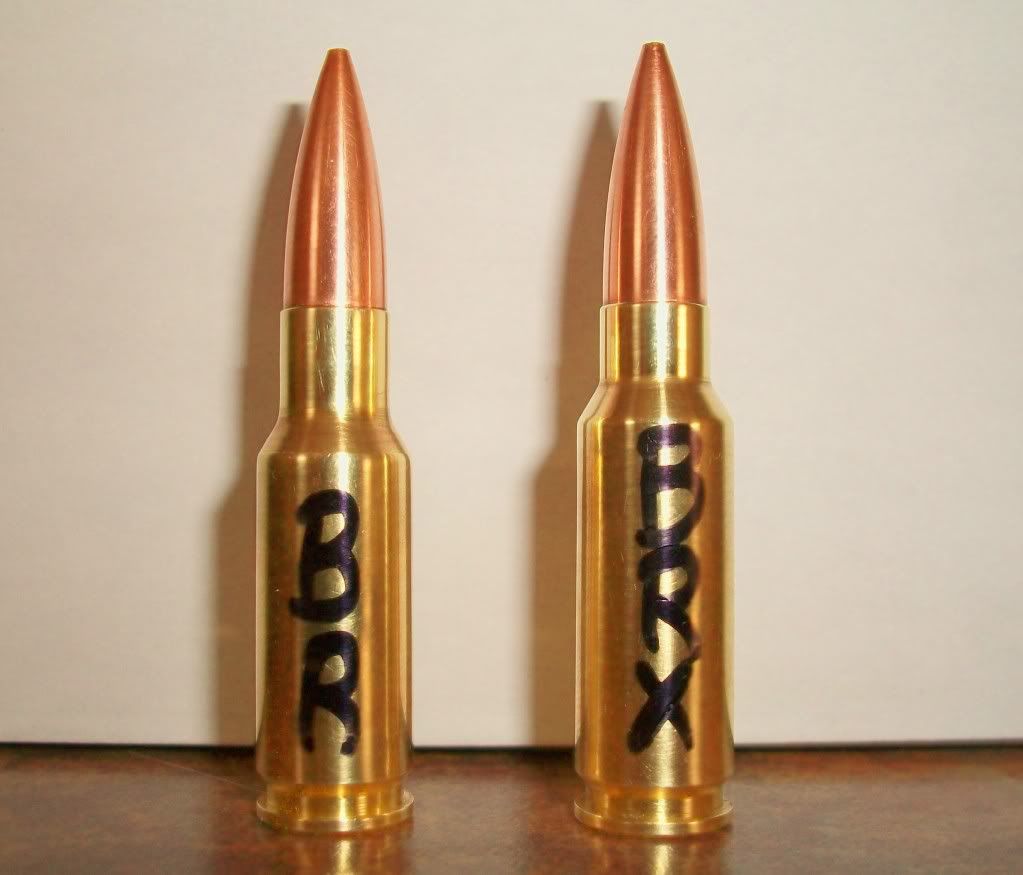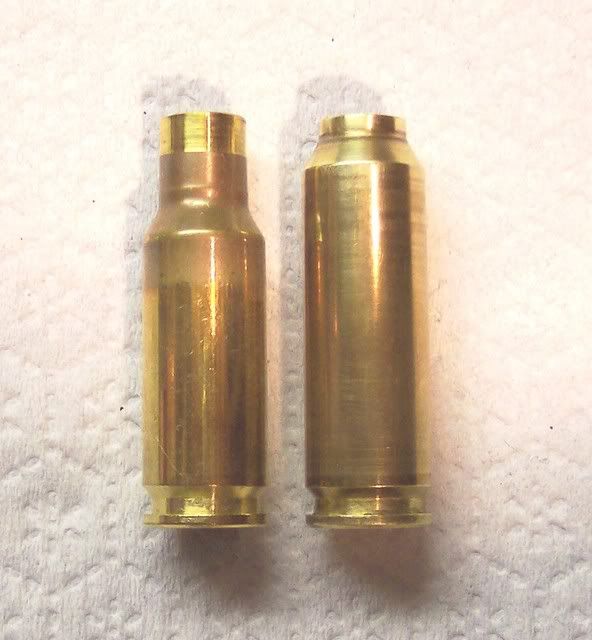Thought this was covered back in my first post.....

al
alinwa: My post was meant more along the lines of a devils advocate reply.

Like many things mechanical, assigning absolutes to all situations can be a sticky thing. If all of this were true, how is it possible for me to f-form a 30BR case into a 30BRX (shoulder blown..yes, blown...forward .100) w/o using a false shoulder? 50 cases fired and z-e-r-o issues. Fired and dissected cases show z-e-r-o thinning foward of the case head. Here's a pic for reference:
My 30WolfPup cases are f-formed the same way. In this case (pun intended) the shoulder went foward a whopping .240.

Again, a reference pic with ready to f-form case (lt.) and f-formed case (rt.):
There are a couple things that make this possible. One is mechanical and the other serendipitous. The serendipitous part has to due with circumference. Here's some numbers to mull:
.224 bullet circumference: .7037
.243 bullet circumference: .7634 (
9%> .224)
.308 bullet circumference: .9676 (
37%> .224 and
26%> .243)
Assuming that .250 of the bullet is in the neck in all three scenarios (a reasonable assumption), it's clear that there's a big difference in how much surface contact area difference there is between the three examples. Let's simplify things even more and say the firing pins impact force is the same on all three examples and connect the dots accordingly.

I ciphered out some surface area figures, but no need to bore anyone with that data. I had to take my socks off and use the toes on both feet to get an accurate answer......it's the South Dakota way, dontcha' know? We only have three calculators in the whole state and today is not my day to use one of 'em......

Guys making .30 cal. Hunter class cases from 308W or 300 Savage parent cases have been shoving the shoulders back .020-.030 before f-forming them to the chamber for decades, so it's not exactly a new process.
I'll let 'ya ponder the remaining piece of the puzzle.


Good discussion and good shootin', guys.

-Al



